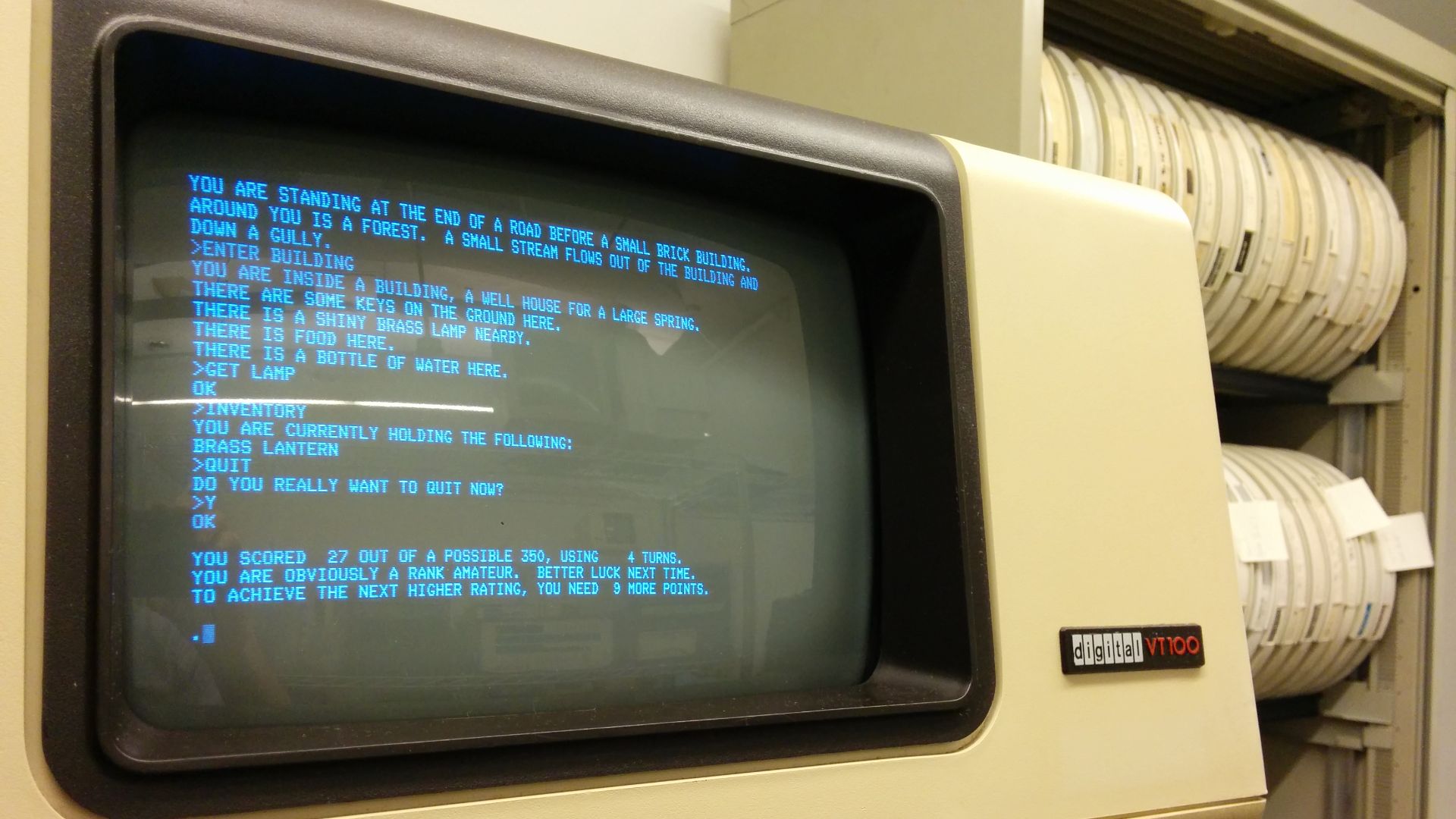Before Consoles, There Were Experiments
Long ago, before joysticks and hyper-realistic graphics, the earliest video games flickered to life on oscilloscopes and room-sized computers. These digital pioneers laid the foundation for today's global gaming industry. By tracing these 20 titles, we uncover the inventions and oddities that sparked one of the world's most powerful entertainment revolutions.
 Hockey 1972 Video Game 6-player Version on Magnavox Odyssey by Odyssey Now
Hockey 1972 Video Game 6-player Version on Magnavox Odyssey by Odyssey Now
1. Nimrod (1951)
More like an installation than a video game, Nimrod stunned audiences at the Festival of Britain. Built by Ferranti to showcase computing power, it used a matrix of lights to play the mathematical game Nim. Though not interactive in a modern sense, it visually represented computation in an era before screens.
 Nimrod Computer Game Simulation (1951) by Old Classic Retro Gaming
Nimrod Computer Game Simulation (1951) by Old Classic Retro Gaming
2. OXO (1952)
Tic-tac-toe made its digital debut through OXO, a game that quietly made history from inside a University of Cambridge laboratory. Its creator, A.S. Douglas, programmed it onto the EDSAC computer as part of his research, pioneering the use of a graphical screen long before monitors became standard.
 OXO (1952) - First video game with random-access memory by Ultimate History of Video Games
OXO (1952) - First video game with random-access memory by Ultimate History of Video Games
3. Tennis For Two (1958)
Visitors to Brookhaven National Laboratory in the late '50s didn't expect to play tennis. Yet, there it was—displayed on an oscilloscope, a ball arcing across a screen. Created to entertain, Tennis for Two added fun to physics and offered a rare glimpse of early visual gameplay.
 Tennis for two [1958] by videogamesfoundation
Tennis for two [1958] by videogamesfoundation
4. Spacewar! (1962)
A central star exerting gravity, two ships firing torpedoes, and a battle for survival—Spacewar! was as complex as early gaming got. Developed at MIT, it wasn't created for profit or education but rather to push the PDP-1 computer's limits. It did and inspired future coders along the way.
5. The Sumerian Game (1964)
Unlike action-packed arcade classics, this early game used storytelling and decision-making to simulate life in ancient Mesopotamia. Through teletype output, players governed resources and managed crises. Created in collaboration between a teacher and a programmer, it holds the distinction of being the first educational game.
6. Galaxy Game (1971)
Not content with simply admiring Spacewar!, Stanford students Bill Pitts and Hugh Tuck recreated it as Galaxy Game and added a coin slot. This huge machine, installed on campus, became the first commercial arcade game, hinting at a future where gameplay meant pocket change.
 THE FIRST EVER ARCADE GAME! - Galaxy Game (1971) by Canon Games
THE FIRST EVER ARCADE GAME! - Galaxy Game (1971) by Canon Games
7. Computer Space (1971)
Sleek and confusing to many, Computer Space marked a bold step into arcades. Packaged in a fiberglass cabinet, it delivered action, but its controls proved too much for casual players. Still, it opened the door for Atari's next, much simpler idea: Pong.
 Original Nutting Associates Computer Space (1971) gameplay by andys-arcade
Original Nutting Associates Computer Space (1971) gameplay by andys-arcade
8. The Oregon Trail (1971)
Students learning about westward expansion were met with more than textbooks—The Oregon Trail put them in charge of a wagon party. Packed with challenges like river crossings, food rations, and random calamities, this game was both educational and unforgettable. Many players remember it simply for the phrase: "You have died of dysentery."
 The Oregon Trail (1971) - Side 1 (Green Screen) by John McGill
The Oregon Trail (1971) - Side 1 (Green Screen) by John McGill
9. Pong (1972)
Success didn't come from complexity. Pong delivered a stripped-down game of table tennis with laser precision. Housed in a wooden cabinet and tested in a bar, it drew crowds so quickly that the machine broke down because it filled up with too many quarters.
10. Magnavox Odyssey Games (1972)
Long before HDMI or wireless controllers, households connected a plastic box to the TV using screws. That box was the Magnavox Odyssey. Featuring several rudimentary games, including a table tennis one with screen overlays, it introduced console gaming to the world despite skepticism and limited marketing.
 Let's Play: Analogic (Magnavox Odyssey 1972) by Odyssey Now
Let's Play: Analogic (Magnavox Odyssey 1972) by Odyssey Now
11. Hunt The Wumpus (1973)
Navigating a maze of caves without graphics, players relied solely on text clues to avoid a lurking Wumpus. This early adventure game encouraged logical deduction and imagination. It laid the groundwork for future narrative-driven titles, proving you didn't need visuals to create suspense.
 Hunt The Wumpus (1973) by Video Game History Project
Hunt The Wumpus (1973) by Video Game History Project
12. Maze War (1973)
Maze War's mechanics later defined the entire first-person shooter (FPS) genre. First-person perspective, networked multiplayer, and shooting mechanics—Maze War quietly pioneered all three. Played on Imlac PDS-1 terminals, it placed players in a 3D maze and let them hunt one another.
 Maze War (1973) - First 3D first-person shooter by Ultimate History of Video Games
Maze War (1973) - First 3D first-person shooter by Ultimate History of Video Games
13. Dungeons & Dragons (1975)
While not a traditional video game, the text-based D&D adaptations running on PLATO systems introduced fantasy elements such as statistics, character classes, and dungeons. These components directly influenced RPGs and played a crucial role in shaping the digital role-playing genre.
 Dungeons & Dragons (1975) - First Role-playing game by Ultimate History of Video Games
Dungeons & Dragons (1975) - First Role-playing game by Ultimate History of Video Games
14. Gun Fight (1975)
This wasn't just another arcade duel. It was a milestone. Gun Fight was the first arcade game to use a microprocessor instead of discrete logic. That shift opened up new possibilities for responsiveness and complexity going forward.
15. Breakout (1976)
Behind its colorful blocks and simple paddle mechanics lies a story of engineering ambition: Steve Wozniak and Steve Jobs helped design the hardware. Breakout transformed Pong's back-and-forth into a solo challenge, becoming an arcade favorite and blueprint for future block-busting games.
 Breakout - (1976) - Arcade - gameplay HD by vghchannel
Breakout - (1976) - Arcade - gameplay HD by vghchannel
16. Colossal Cave Adventure (1976)
Initially based on cave mapping and fantasy storytelling, this text-based game sent players into a labyrinth of puzzles and mythical creatures. It sparked the entire interactive fiction genre with its command-line input system. This one inspired decades of adventure games and computer-based storytelling.
17. Zork (1977)
Forget graphics because Zork built entire worlds with words. Originally developed on a PDP-10 at MIT, it evolved into one of the most immersive text adventures ever written. With clever puzzles and dry humor, Zork pushed the boundaries of narrative in digital gaming.
 Zork I: 100% Complete Walkthrough (The Great Underground Empire) by SwimYBO
Zork I: 100% Complete Walkthrough (The Great Underground Empire) by SwimYBO
18. Combat (1977)
Bundled with the Atari 2600, Combat ensured that early adopters had something thrilling to play out of the box. Tank duels, biplane dogfights, and ricocheting shots made it a surprisingly competitive experience. Combat also introduced multiplayer gaming to home consoles in earnest.
 Combat - (1977) - Atari 2600 - WIN! HD by vghchannel
Combat - (1977) - Atari 2600 - WIN! HD by vghchannel
19. Space Invaders (1978)
Japan's gaming boom began with alien invaders descending in rhythmic waves. Created by Tomohiro Nishikado, this title not only launched a genre but also made a phenomenon. Arcades needed more coin slots; Japan briefly ran low on 100-yen coins. The age of arcades had arrived.
 Space Invaders 1978 - Arcade Gameplay by Game Archive - No Commentary Gameplay
Space Invaders 1978 - Arcade Gameplay by Game Archive - No Commentary Gameplay
20. Star Trek (1971)
Born on a borrowed terminal, Star Trek let players command the USS Enterprise against Klingon fleets using only text. Developed by Mike Mayfield, it spread like wildfire across mainframes and early PCs, becoming a cultural touchstone. Strategy and command-line gameplay met in this beloved early classic.













